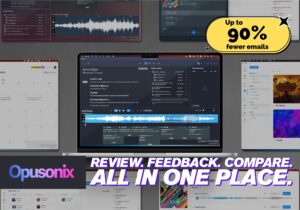In this Nitropack review, we analyze whether Nitropack delivers on its claims to help you “achieve a quicker load time… and a better user experience in less than 5 minutes without writing a single line of code.”
Having a faster website speed — i.e. one that loads quickly and responds really fast — is critical to your website’s success.
People don’t like waiting a long load time for web pages. And since delivering content that users like is pivotal to their business model, search engines like Google care about the experience users have on the websites they rank.
In addition to addressing common questions and concerns about Nitropack, we’ll also discuss some common queries around it, such as:
Ready to blaze past your competition?
Nitropack is a cloud-based plugin for enhancing website performance that can be used on any CMS.
It’s an all-in-one tool that performs speed optimization by combining several tactics – like caching, a content delivery network, image optimization, and code optimization – which can result in
Nitropack improves your website performance using several optimization features, including:
We’ll break each of these features down in a later section. But the easy way to think about it is this:
When someone visits your website, their web browser (Google Chrome, Safari, Microsoft Edge, etc.) must request access to your site’s content from a server. Nitropack’s website optimization methods are all about making it easier and faster for web browsers to get access to your content by reducing the workload on both the browsers and the servers.
Google has made the user experience a key input for its core web vitals and a critical ranking factor for websites. One of the ways Google assesses the UX of a website is through Core Web Vitals (found in your Google Analytics), which consists of 3 measurements of page speed and user interaction: largest contentful paint (LCP), first input delay (FID), and cumulative layout shift (CLS).
Don’t worry, we’ll make this simple for you.
With regard to Nitropack, LCP and FID are the most relevant.
LCP is a measure of how long it takes a page to load for a user, from when they click on a link to when they can see and interact with a majority of the page content.
FID is a measure of how long it takes a user to interact with your page – i.e. clicking on a link, entering info into a form field, etc.
While not so important for blog pages, FID is very important for login pages, sign-up pages, and other interaction-based pages.
Through image/code compression, caching, and CDNs, Nitropack reduces both LCP and FID by enabling pages to load quicker and easier. This helps you rank in search engines and results in a better experience for your site visitors.
Start by installing the Nitropack plugin.
2. Search for Nitropack, then click the Install Now button.
3. Go to Plugins > Installed Plugins and click Activate on Nitropack.
Once you’ve installed Nitropack, you’ll need to connect it to your Nitropack account.
2. In a new tab, open your WordPress site admin panel and go to Plugins > Installed Plugins > NitroPack > Settings
3. Click “Connect to NitroPack.” and you’re good to go!
While each of the following four features is different, they all reduce the workload on browsers and servers using two processes:
The smaller the data is, the easier and quicker it is to transfer. The closer the data is to the browser, the less time it takes for requests and data to be sent/received.
With caching, assets from your website (i.e. images, HTML, etc.) are stored locally on a visitor’s computer after their first visit.
The next time that person visits your site, their browser doesn’t need to request those assets from the server again because it already has them. This reduces the workload on the server and speeds up the rendering process.
Code optimization is the process of reducing the size of the website code (HTML, Javascript, CSS) in order to make it easier for a visitor’s web browser to download it. This happens through code minification and compression.
With code minification, the plugin (i.e. Nitropack) eliminates the unnecessary characters from the code that the browser doesn’t need to correctly process the website content. This includes white spaces, bookmarks, comments, and line break characters.
With code compression, the plugin encodes the web code to reduce its size, similar to how zip files work. This makes transferring the code to the visitor’s browser faster. The browser then decompresses the code and properly renders the website.
Image optimization is the process of compressing the file size of images on your site as much as possible without compromising quality. Because the files are smaller, they can be transferred from the server to a visitor faster.
When someone visits your website, their web browser requests access to your site’s content from a server. The farther away the server is, the longer it takes for the server to receive the request and send the requested data.
With a content delivery network, your website content is stored on a network of servers throughout the world, so visitors can access the server closest to them wherever they are. This reduces the physical distance between a visitor and a server and increases the speed of data transfer.
Nitropack offers a free plan and 3 paid plans.
Each plan only supports one website, which is one of the downsides of using Nitropack as opposed to other website optimization plugins like WP Rocket (which supports 3 sites).
Each plan also comes with a limit on pageviews and bandwidth. So the plan you choose will depend both on how much web traffic you get each month and the size of the files on your site (i.e. how much data are you sending in each pageview).
With yearly plans, the prices decrease by about 16%.
There’s some discussion online about whether or not Nitropack is a blackhat plugin.
In short, our answer is no.
This question seems to stem from the fact that Nitropack uses a different approach to website optimization than traditional tools. And many of the complaints/analyses that accuse Nitropack of being blackhat are from years ago – Nitropack has improved their tool a lot in the years since.
The bottom line is: does Nitropack speed up your website? A simple Google search will reveal that test after test shows that the answer is yes.
Does it do so using any dubious methods that can be considered blackhat? No
User experiences with Nitropack vary, and they’ve improved their product over the years. Whether you choose Nitropack or another tool will depend upon your budget, goals, and website needs.
That being said, we assembled a brief list of Nitropack’s pros and cons.
While WP Rocket and Nitropack are both great tools for site speed optimization, they do so using some different methods.
Both use CDNs, caching, image optimization, and file optimization (i.e. code minification and compression), WP Rocket also includes some other features:
You can also use their Advanced Rules feature to fine-tune how your cache functions.
Another big difference is in their plans/pricing. While Nitropack plans are slightly cheaper than WP Rocket, WP Rocket plans support up to 3 websites. So if you have multiple websites, you may want to go with WP Rocket.
Ultimately, the plugin you choose will depend on your goals and budget. But both tools are great options.
The question of whether Nitropack is worth it consists of three sub-questions:
We’ve answered all three questions in this article.
No, Nitropack is not blackhat.
Yes, Nitropack speeds up your website.
By speeding up your website, Nitropack helps you rank in search engines and deliver a better user experience.
So, yes Nitropack is worth it.
While most of your queries would have been answered by now, here are a few common doubts and queries that get asked often.
If your goal is to increase site speed, boost search engine ranking, and improve your user experience, then Nitropack is a good tool to do so.
No, Nitropack does not cheat. They use standard site optimization tactics that genuinely result in a faster website.
Google Pagespeed Score is an important factor Google uses to rank web pages, and slower page-loading can harm your SEO. Page speed can also affect other SEO metrics indirectly by reducing dwell time and increasing bounce rates.
By increasing your site speed, Nitropack can have a positive impact on your site’s ability to rank in search results.
Both tools are great for improving site performance and load speed. The main differences between them are:
The tool you choose will ultimately depend upon your budget and goals.
Nitropack offers a limited free plan and 3 paid plans:
The ‘pagespeed’ of your website has a massive impact on your website conversions and page rankings. Improving it can do wonders for you, especially if your website aims to generate leads or sell products. And Nitropack is the undisputed King when it comes to increasing your ‘pagespeed’.
Besides, by optimizing the manner in which the website gets loaded, it can help you save loads on your hosting costs.
But don’t take my word for it. Explore the free plan today and verify for your own self. And don’t forget to share your results in the comments below.
The post Nitropack Review (2022): Blackhat SEO Hack Or The Real Deal? appeared first on Smart Blogger.







